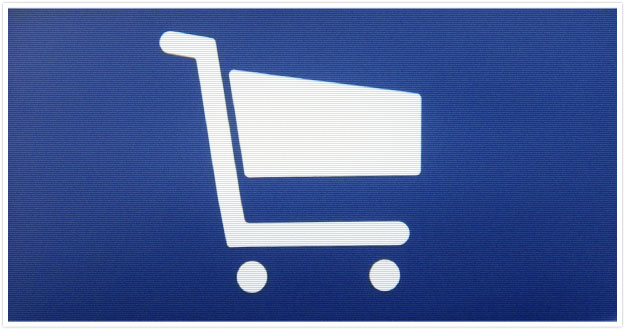5 Must-Haves for Today's E-Commerce Website
November 2012
By Tara Hornor

E-commerce has come a long way in the last few years. We now have phases of the online shopping experience going back to the 90s up to the modern, fully social shopping experience.
The current e-commerce website looks very little like what shopping looked like even a few years ago, but not everyone is on board. There are still a lot of sites that are more "traditional" in their shopping experience. If your website still offers the same layout as it did even just a few years ago, it may be time for an upgrade. So check out these modern trends in e-commerce and see if you need to integrate the latest technology into your online store.
Social...very social
Shopping has always been about the social experience. There's nothing quite like window shopping with your friends or trying on a pair of shoes to get your friend's opinion. Ecommerce doesn't come close. Or at least it didn't until recently. Now shopping has become quite the social experience online when you have sites like Pinterest, Twitter, and Facebook that are intimately intertwined with most shopping experiences.
Top e-commerce sites, such as Amazon.com, include social media buttons on each page so that customers can easily share products or purchases with friends and family. Others also provide the option to sign in using social media accounts. To really capitalize on the sharing feature, some websites also encourage social sharing immediately after someone leaves a review or makes a purchase simply by placing social sharing widgets on the Thank You page. While Facebook and Twitter are definitely the big social sites to include, do your research and find out where customers most commonly share your products.
Mobile optimized
Another major change has been the use of mobile phones for shopping. Sites used to have a one-size fits all approach. Then came the mobile version of a site. Now, sites utilize responsive web design and adaptive web design to present the same information in different formats.
To really improve conversions via mobile shoppers, e-commerce sites have to remember that mobile customers are usually on the go and simply wanting a quick and easy experience, whether it's researching prices or making a purchase. You can simplify a site for mobile by including a banner and a menu that only includes options that mobile users need, such as popular products, categories of products, a product search, account login, or whatever your customers seem to access via your mobile site. Check out these 10 laws for a successful mobile e-commerce site to see more excellent tips and examples on mobile design.
Ratings rule
People love to have their opinions heard - by both their social circles and you, the vendor. Rating systems give people the opportunity to both praise (or pummel) the store from which they've purchased. In turn, others who may be interested in a product can read reviews and ratings to get a sense of your level of service.
Rating systems are just about mandatory these days. Not having any reviews can be worse than having poor to medicocre ratings. It's risky. You can use this risky business to your advantage, though. Take the feedback and the invaluable data and turn it into something that empowers and improves what you do. Plus, negative reviews can actually increase consumer purchases by as much as 67%! Most commonly, e-commerce websites place the opportunity for reviews on each product page. For those of your customers who are less verbal, offer a way for them to click on stars to simply rate a product without having to leave a comment if so desired.
One-click wonders
Finally, modern e-commerce sites make it easy to purchase and move on. It's not about loading up a "shopping cart" any more. People buy one thing and get out. More and more data indicates that consumers shop for a single item and they're done, especially when shopping through a mobile device. A recent study, in fact, found a 20% improvement when consumers had the option to complete a purchase on one click. You can try to upsell, but you may want to leave this for after the purchase. Shoppers online want a fast, easy to use purchasing process unencumbered by the likes of confirming what's in their cart.
Give them the option to buy with a one-click like purchase and keep the cart as a back up if you must. For instance, you could remove the shopping cart option from your mobile version but allow customers to use it if needed when accessing your desktop version. But don't be surprised if you abandon the cart just like consumers are doing. Top e-commerce sites such as iTunes have certainly found single-click purchasing to be a huge success.
A modern e-commerce site is increasingly social, optimized for all kinds of browsing devices, has a rating system, and makes it fast and easy to purchase. Is your system up to speed or do you still have shopping cart isolated from the outside social media world?
Tara Hornor has a degree in English and has found her niche writing about marketing, advertising, branding, web and graphic design, and desktop publishing. She writes for PrintPlace.com, a company that offers color printing for business cards, printed catalogs, posters, brochures, custom postcards, and more printed marketing media. In addition to her writing career, Tara also enjoys spending time with her husband and two children. Connect with Tara on Twitter @TaraHornor.